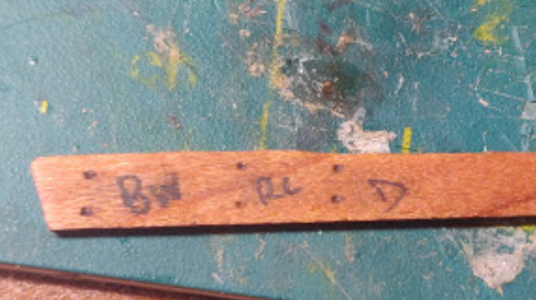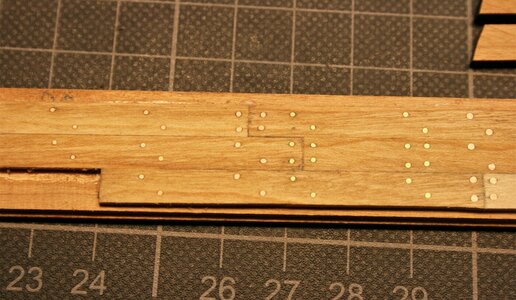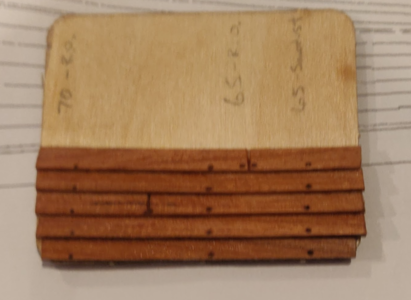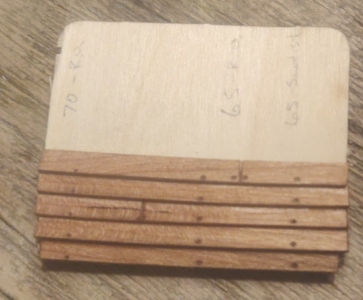- Joined
- Mar 19, 2020
- Messages
- 206
- Points
- 213

I was just wondering if anyone already had some thoughts about what finishes they were considering and what people were planning to use for the hull planking in terms of treenails/bolts. I also understand that the original version had a “white” hull below the waterline and if anyone was considering painting the hull. I have experimented with some finishes such as varnish, wax and oil. The tung oil gives the nicest and warmest finish and I am looking at some colour nuances maybe by using different finishes but besides the dark whales I don’t intend to paint anything.
What are your thoughts?
What are your thoughts?









